-
 New productQuick connect Sram chain
New productQuick connect Sram chain- €2.99
-
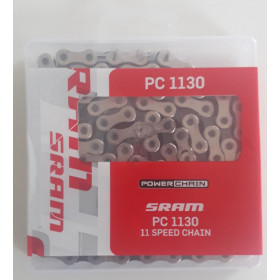 New product -10%Sram chain 10s PC1130
New product -10%Sram chain 10s PC1130- €22.49
- €24.99
-
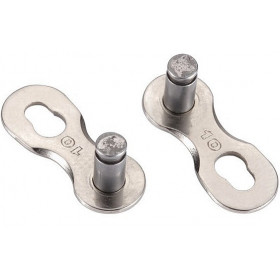 New productSunrace CNQ10 quick connect for chain 10s
New productSunrace CNQ10 quick connect for chain 10s- €1.90
-
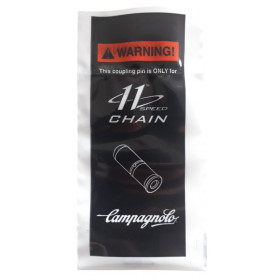 New productCampagnolo chain rivet
New productCampagnolo chain rivet- €6.49
-
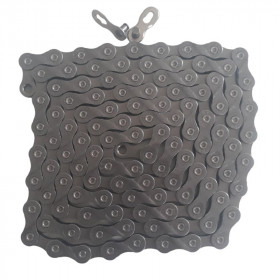 New product -25%9s chain KMC X9
New product -25%9s chain KMC X9- €11.96
- €15.95
-
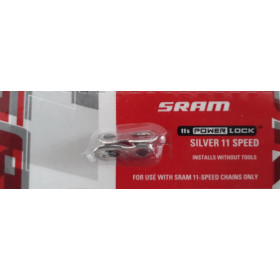 New product -25%Chain quick connect Sram 11 speed power lock
New product -25%Chain quick connect Sram 11 speed power lock- €3.15
- €4.20
-
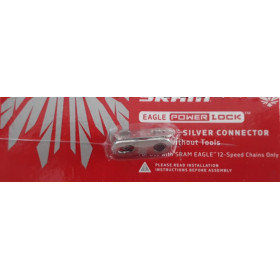 New product -25%Chain quick connect Sram 12 speed Eagle power lock
New product -25%Chain quick connect Sram 12 speed Eagle power lock- €3.15
- €4.20
-
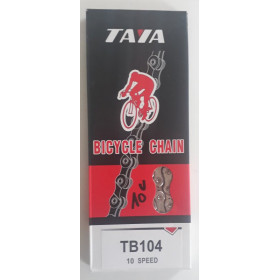 New product -18%10s chain Taya DECA-101
New product -18%10s chain Taya DECA-101- €20.49
- €24.99
-
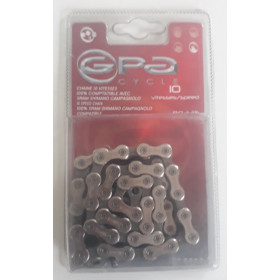 New product -25%Bicycle chain 10s GPA Cycles
New product -25%Bicycle chain 10s GPA Cycles- €20.21
- €26.95
-
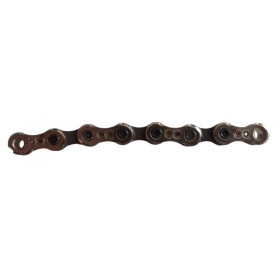 New product2 Campagnolo 10-speed bicycle chain links
New product2 Campagnolo 10-speed bicycle chain links- €9.49
-
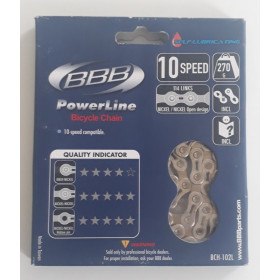 New product -30%10s chain bbb BCH-102L114 links
New product -30%10s chain bbb BCH-102L114 links- €24.49
- €34.99
-
 New product -38%Shimano chain 11s CN-HG701-11 116 links
New product -38%Shimano chain 11s CN-HG701-11 116 links- €30.94
- €49.90
-
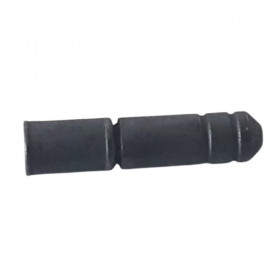 New productShimano Dura-ace 7801 Ultegra 6600 10s chain rivet
New productShimano Dura-ace 7801 Ultegra 6600 10s chain rivet- €2.10
-
 New product -25%Shimano chain 12s CN-M8100
New product -25%Shimano chain 12s CN-M8100- €26.24
- €34.99
-
 New product -45%12s chain Campagnolo Chorus 108 links
New product -45%12s chain Campagnolo Chorus 108 links- €24.20
- €44.00
-
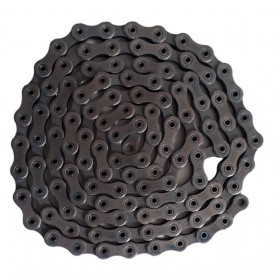 New product -50%Shimano Dura-ace XTR 11s HG901 chain
New product -50%Shimano Dura-ace XTR 11s HG901 chain- €31.50
- €62.99
-
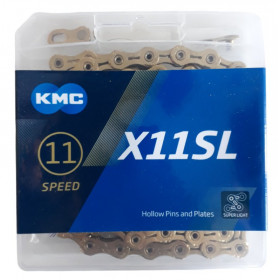 New product -30%11 speed chain KMC X11SL Ti N gold 118 links
New product -30%11 speed chain KMC X11SL Ti N gold 118 links- €52.49
- €74.99
-
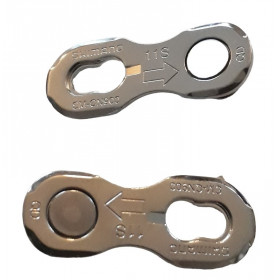 New productChain quick release Shimano 11s
New productChain quick release Shimano 11s- €8.99
-
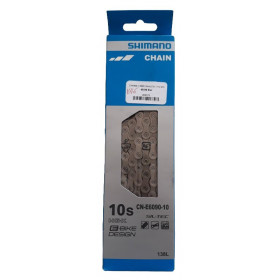 New product -30%E-bike Shimano chain 10s CN-E6090-10
New product -30%E-bike Shimano chain 10s CN-E6090-10- €38.49
- €54.99
-
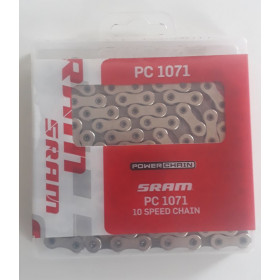 New product -40%Sram chain 10s PC1071
New product -40%Sram chain 10s PC1071- €26.99
- €44.99
-
 New product -35%Chain Campagnolo Record 10 speed
New product -35%Chain Campagnolo Record 10 speed- €39.64
- €60.99
-
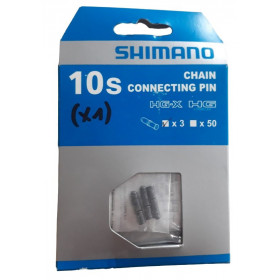 New product -15%Shimano 10s chain rivet
New product -15%Shimano 10s chain rivet- €3.48
- €4.10
-
 New product -42%9s chain Shimano CN-HG53
New product -42%9s chain Shimano CN-HG53- €11.59
- €19.99
Showing 1-23 of 23 item(s)
How to choose the right road bike chain: features, specificities and expert tips
The road bike chain is a vital link in the road bike drivetrain. Too often overlooked, it plays a key role in performance, pedaling smoothness, and the longevity of other components, such as the chainrings or the cassette. In this article, discover the key features, technical specifics, and our expert advice to help you find the best road bike chain suited to your riding style.
What is the purpose of a road bike chain?
The road bike chain is one of the most heavily used components of a bike’s drivetrain. It plays a central role in how the bike functions, mechanically linking the crankset (through the road bike chainrings) to the rear wheel via the cassette. In other words, it transfers the energy generated by pedaling directly to the driving wheel, allowing the cyclist to move forward.
With each pedal stroke, the crankset rotation is converted into linear movement of the chain, which drives the cassette cogs. This movement is made possible by a series of interconnected links that wrap successively around the chainring teeth, the jockey wheels of the rear derailleur, and the road bike cassette sprockets. This continuous loop not only propels the bike forward but also enables gear changes by moving the chain from one ring or sprocket to another via the derailleurs.
On a road bike, chain quality is especially important as it directly impacts shifting accuracy, pedaling smoothness, and overall efficiency. A well-designed chain ensures more effective power transfer, reduces friction, and enhances responsiveness during sprints or out-of-the-saddle climbs.
Moreover, a high-performance road bike chain helps extend the life of the entire drivetrain. A poorly maintained or low-quality chain can quickly wear down the chainrings, derailleur pulleys, and cassette, leading to more frequent and costly replacements. That’s why it’s essential to choose a chain that matches your setup (number of gears, groupset type, usage) and to maintain it regularly.
A bike chain is not just a mechanical link. It’s a technical, strategic, and sensitive component of a road bike, and its performance directly affects yours. A well-chosen, correctly installed, and properly maintained chain guarantees a smooth, quiet, and efficient pedaling experience—whether you're grinding up a mountain pass or flying along a flat straightaway.
Key features of a road bike chain
1. Compatibility with the drivetrain
The first thing to check before buying a road bike chain is its compatibility with your drivetrain—specifically, the number of gears in your groupset and the number of chainrings up front. A poorly matched chain can result in inaccurate shifting, premature wear of components, or even chain drops.Rear Gear Count
Chains are designed to work with a specific number of cogs on the cassette:-
9-speed drivetrain
-
10-speed drivetrain
-
11-speed drivetrain
-
12-speed drivetrain
-
13-speed drivetrain (e.g., Campagnolo Ekar groupset)
As the number of gears increases, the space between the cassette cogs decreases. Chains must therefore become narrower to fit without rubbing. For example, a chain for a 12-speed setup is thinner than one designed for 11-speed. This means you can't use an 11-speed chain with a 9-speed cassette—it won’t align correctly and may skip or wear prematurely.
Number of Chainrings
The number of front chainrings (single, double, or triple) also plays a role in choosing your chain, although it’s less frequently discussed. On road bikes, two main setups are common:
-
Double chainring: Standard on most road bikes (e.g., compact 50/34, mid-compact 52/36, or standard 53/39)
-
Single chainring: Found on some modern road bikes (gravel, minimalist race bikes, time trial setups)
A chain designed for a single chainring setup may be more robust and include specific anti-drop technologies (custom link profiles, stiffer construction), as seen in some 1x12 drivetrains. On the other hand, chains intended for double or triple chainring setups are engineered to promote smooth front shifting, with link shapes and internal ramps that allow controlled movement between rings.
Chain / Gear / Chainring Compatibility by Brand
| Brand | Speeds | Compatible Chainring Setups | Chain Type | Specific Compatibility |
|---|---|---|---|---|
| Shimano | 9 / 10 / 11 / 12 | Double / Single / Triple | HG (Hyperglide), HG+ | Shimano chains recommended for Shimano groups. HG+ optimized for 12-speed road. |
| SRAM | 10 / 11 / 12 | Single / Double | PC (PowerChain), Flattop | Flattop specific to 12-speed eTap AXS. PC1170/PC1130 for 11-speed. |
| Campagnolo | 10 / 11 / 12 / 13 | Double | Chorus, Record, Super Record, Ekar | Campagnolo chains only compatible with Campagnolo groups. Ekar = 13-speed single. |
| KMC | 9 / 10 / 11 / 12 / 13 | Single / Double / Triple | X-Series, DLC, EPT | Universal fit. Compatible with Shimano/SRAM/Campagnolo depending on model. |
| YBN | 9 / 10 / 11 / 12 | Single / Double | SLA, S11e, S12e | Multi-brand compatible. High-end alternative. |
Additional Notes:
-
Shimano HG: Classic standard for 9 to 11-speed drivetrains. HG+ is optimized for 12-speed road (Ultegra and Dura-Ace).
-
SRAM Flattop: A flattened chain design exclusive to the AXS 12-speed range; requires a dedicated chain.
-
Campagnolo Ekar: 1x13 drivetrain with a very thin, specific chain not compatible with other brands.
-
KMC and YBN: Widely appreciated for their broad compatibility and great value. KMC also offers anti-corrosion coatings and lightweight options (hollow pins, DLC coatings).
Pro Tip:
If you're unsure between different models, go with a chain from the same brand as your drivetrain. It's the safest way to ensure perfect compatibility—especially when it comes to smooth shifting and optimal derailleur synchronization.2. Width and length
Each chain has a specific inner and outer width depending on the number of speeds. The length of the road bike chain, on the other hand, depends on your bike’s setup (chainring size, cassette size, and frame geometry). Chain length is adjusted by adding or removing links to ensure optimal tension and derailleur function.3. Weight
On road bikes, weight is a key performance factor. High-end chains use lightweight materials such as hollow steel, drilled pins, or titanium nitride coatings to save a few precious grams without compromising strength. For competitive cyclists, every gram counts especially in climbs and accelerations.4. Materials and surface treatments: a performance booster
The quality of a road bike chain isn’t just about its geometry or compatibility. The materials used and surface treatments applied are crucial for wear resistance, durability, pedaling smoothness, and protection against corrosion.
Steel: the base material
Most road bike chains are made of steel, which is strong, stiff, and cost-effective. Depending on the chain’s quality level, the steel may vary:
-
Standard carbon steel: used in entry-level chains
-
Stainless or alloy steel: found in mid- to high-end models
-
Hollow or lightweight steel (e.g., hollow pins, cut-out plates): used to reduce weight without sacrificing strength
Surface treatments: more than just aesthetics
To enhance the performance of raw steel, manufacturers apply various surface treatments to the links, pins, and rollers. Here are some of the most common treatments:
| Treatment | Properties | Real-World Benefits |
|---|---|---|
| Nickel plating | Shiny finish, corrosion-resistant | Less rust, improved aesthetics |
| Chrome plating | Increased surface hardness, low friction | Longer lifespan, smoother operation |
| DLC (Diamond-Like Carbon) | Ultra-hard carbon-based coating | Extreme wear and noise reduction, maximum durability |
| Ti-N (Titanium Nitride) | Gold-colored, hard coating | Enhances shifting performance, resists oxidation |
| Teflon (PTFE) | Smooth, self-lubricating surface | Reduced friction, quieter function |
| Zinc or Zinc-Nickel | Cost-effective anti-rust coating | Common in mid-range chains for a good price-performance ratio |
Some high-end chains combine several treatments for optimal performance. For instance, you might find a chrome-plated steel body, DLC-coated pins, and outer plates in nickel or titanium—blending durability, aesthetics, and top-level efficiency.
Internal treatments: the core of performance
In addition to external surface coatings, some chains also benefit from internal treatments, particularly on the pins and rollers, which endure the highest mechanical stress:
-
Heat treatment for hardening and increased durability
-
Factory wax or paraffin-based internal lubrication
-
Shimano “Sil-Tec” technology: an ultra-smooth fluorine-based coating on internal surfaces to reduce friction and improve chain life
Comparison of top road bike chains: materials & treatments
| Model | Speeds | Main Material | Surface Treatments | Key Strengths | Recommended For |
|---|---|---|---|---|---|
| Shimano Dura-Ace CN-HG901 | 11 / 12 | Stainless steel | Sil-Tec (fluorine coating), chrome plating | Ultra-smooth, silent, durable | Competitive riders, intensive use |
| SRAM Red Flattop | 12 AXS | High-density steel | DLC + hardened chrome on rollers | Exceptional strength, innovative flat design | High-end road, AXS 12-speed |
| Campagnolo Super Record 12s | 12 | Reinforced steel | Nickel + anti-rust treatment | Very precise, surgical shifting | Campagnolo 12-speed groups |
| Campagnolo Ekar 13s | 13 | Steel + special treatments | Low-friction coating | Specific for 1x gravel, smooth and durable | Campagnolo Ekar only |
| KMC X11SL DLC | 11 | Lightweight hollow steel | DLC (black or red) + nickel plating | Lightweight, durable, silent | Performance road, triathlon |
| KMC X12 Ti-N | 12 | Steel | Gold titanium nitride (Ti-N) | Very smooth, oxidation-resistant | Versatile, Shimano/SRAM compatible |
| YBN SLA110 | 11 | Steel + hollow pins | Ti-N or nickel, factory paraffin-lubed | Excellent longevity, low maintenance | Frequent training, endurance events |
| Shimano 105 CN-M7100 | 12 | Steel | Sil-Tec, directional design | Great value for money | Regular use, amateur riders |
Buying tips
-
For electronic drivetrains (Di2 / AXS / EPS), always use a chain from the same brand as the groupset to ensure full mechanical and firmware compatibility.
-
For 11 or 12-speed mechanical drivetrains, universal models like the KMC X11SL or YBN SLA110 offer excellent high-end alternatives.
-
DLC or Ti-N coatings are worth the investment for cyclists who frequently ride in wet conditions or abrasive environments (mountains, winter, salted roads).
-
A well-maintained chain (regular degreasing, proper lubrication) can last 2 to 3 times longer, even without high-end surface treatments.
What is the best road bike chain ?
Choosing the best road bike chain depends on several factors: compatibility with your drivetrain (Shimano, SRAM, Campagnolo, or others), the number of speeds, your riding level (leisure, sportive, competition), and of course, your budget. Each brand offers chains with specific features—surface treatments, materials, and technologies—that influence performance, durability, and pedaling smoothness.
Shimano chains
Reliable, efficient, and perfectly calibrated for Shimano drivetrains, Shimano chains are a solid choice. The Ultegra and Dura-Ace models, featuring Sil-Tec treatment, strike an excellent balance between smoothness, quiet operation, and wear resistance. The CN-HG901 (11-speed) and CN-M9100 / M8100 (12-speed) are highly praised for their performance and longevity—ideal for regular riders and competitive cyclists looking for dependable gear.
SRAM chains
SRAM chains are known for their smooth operation and strength. They feature the PowerLock quick link, a secure and user-friendly connecting system. High-end models like the SRAM Red Flattop 12-speed include DLC treatment for exceptional durability. Their unique flat-top design helps reduce noise and improves aerodynamics—perfect for users of eTap AXS groupsets.
Campagnolo chains
Campagnolo manufactures its chains with extreme precision, exclusively for its own groupsets. The Chorus, Record, and Super Record models are engineered for ultra-clean shifting thanks to their specific internal geometry. Demanding riders loyal to the brand value their exceptional performance and premium finish. Note: the Ekar 13-speed chain is reserved for 1x gravel drivetrains only.
KMC chains
KMC is one of the largest independent chain manufacturers, offering compatibility with Shimano, SRAM, and Campagnolo systems. The X-Series chains (X11SL, X12, etc.) are well-known for their robustness, universal compatibility, and excellent value. DLC (Diamond-Like Carbon) or Ti-N (Titanium Nitride) treated versions offer superior durability and ultra-smooth pedaling. Available in various colors, they also appeal to cyclists with an eye for design.
Ideal for cyclists seeking a high-performance chain without being limited to a single drivetrain brand.
YBN chains
Less known to the general public, YBN (Yaban Chain Industrial Co.) is highly regarded among competitive and demanding sportive riders. Models like the YBN SLA110 (11-speed) or SLA1210 (12-speed) combine hollow pins, Ti-N coating, and factory-applied paraffin lubrication. The result: a chain that is smooth, quiet, corrosion-resistant, and exceptionally long-lasting—even in tough conditions.
YBN is an excellent choice for riders who want a technologically advanced, high-durability chain often priced more competitively than mainstream brands.
Summary table
| Brand | Key Advantages | Ideal For |
|---|---|---|
| Shimano | Reliability, smoothness, Sil-Tec treatment | Regular riders and competitors |
| SRAM | PowerLock link, DLC treatment, Flattop design | AXS users, high-end road setups |
| Campagnolo | Precision engineering, refined finish, exceptional efficiency | Campagnolo loyalists |
| KMC | Universal compatibility, DLC/Ti-N options, stylish design | Sportive riders, performance optimization |
| YBN | Advanced tech, paraffin lubrication, long lifespan | Demanding cyclists, intensive use |
When should you replace your road bike chain ?
A worn chain affects drivetrain performance and accelerates the wear of your chainrings and cassette. It's generally recommended to replace your road bike chain every 3,000 to 5,000 km, depending on your pedaling style and riding conditions (rain, dust, mountains, etc.).
Use a chain wear indicator tool (also called a chain stretch gauge) to check the condition of your chain. A chain that's too loose or rusty can lead to poor shifting and reduced efficiency.
Road bike chain maintenance: best practices
To ensure smooth, quiet, and long-lasting drivetrain performance, regular chain maintenance is essential. A clean and well-lubricated chain not only improves pedaling efficiency but also extends the life of your cassette and chainrings—which are much more expensive to replace.
1. Cleaning after every exposed ride
After riding in rain, on wet roads, or in dusty or salty conditions (especially in winter), it’s essential to:
-
Wipe the chain with a clean cloth to remove moisture and debris.
-
Use a chain-specific brush to dislodge mud, sand, or grime between the links.
-
If the chain is heavily soiled, apply a bike-specific degreaser (preferably water-based or biodegradable), then rinse and dry thoroughly.
2. Periodic degreasing
Every 200–400 km (or every 3–4 intense rides), perform a full degreasing:
-
Remove the chain if it features a quick link (PowerLink or QuickLink).
-
Soak it in a degreasing bath or use a chain cleaning tool with reservoir.
-
Rinse with clean water and dry using a cloth or compressed air.
Tip: Avoid harsh solvents (like white spirit, gasoline, or standard WD-40), which can damage seals and surface coatings.
3. Proper lubrication
Once the chain is clean and dry, apply a bike-specific chain lubricant, suited to the weather conditions:
| Lubricant Type | Ideal Conditions | Benefits |
|---|---|---|
| Dry lube | Dry weather, clean roads | Clean-running, smooth pedaling |
| Wet lube | Rain, humidity, long distances | Excellent corrosion protection |
| Wax (paraffin) | Dry road, performance use | Very quiet, keeps the chain clean |
-
Apply one drop per link, on the inside of the chain.
-
Backpedal to distribute the lubricant evenly.
-
Wipe off any excess with a dry cloth after a few minutes.
4. Regular chain inspection
Once a week (or before every long ride), check the overall condition of the chain:
-
Stiff or seized links may indicate dirt build-up or corrosion.
-
Excessive lateral play is a sign of early stretching.
-
Metallic noises can point to lack of lubrication or wear.
-
If your chain has a quick link, ensure it’s securely fastened and not loose.
Why chain maintenance matters
A well-maintained chain:
-
Reduces power loss due to friction
-
Minimizes noise and improves ride comfort
-
Extends the lifespan of your road bike cassette and chainrings
-
Maintains precise shifting, especially on modern 11- or 12-speed drivetrains
In summary
The road bike chain is a key component of your drivetrain. Choosing the right one helps you maximize performance, avoid mechanical issues, and protect your components. Whether you’re a casual cyclist or a seasoned competitor, investing in a high-quality, compatible, and well-maintained chain is a smart move.
To learn more:
How to change your road bike chain
How to determine the length of a road bike chain
